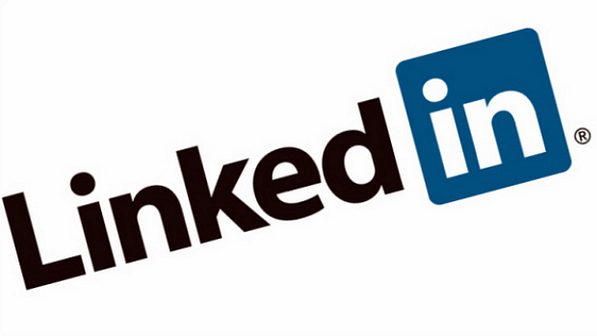In the halcyon days of social media technologies, the financial services industry avoided them like the plague, fearful of opening a Pandora’s Box of bad publicity and security leaks. However, as the technology has matured and entered the mainstream, the world of finance has passed through a phase of reluctantly embracing it to the current stage of actively leveraging it as a legitimate and even crucial tool.
Social media has been used for a variety of purposes across the hedge fund industry. Investors use it to find out what others are saying about hedge funds they are considering investing with. Service providers and hedge funds recognise this, and include it as part of their sales and marketing strategy, as well as using it to research their customer base and find out how they are perceived.
Now, a study by Agecroft Partners has identified trends in the increased use of social media by hedge funds to enhance their marketing campaigns. The main network, from a hedge fund perspective, is LinkedIn, used by approximately 90 per cent of the hedge funds that have more than USD100 million in assets under management. This followed, somewhat distantly, by Twitter.
LinkedIn has a number of uses for hedge fund managers. One of the dominant usages is to enhance their knowledge of investors. Because most hedge fund investors don’t have websites, or if they do they make it password protected, the hedge fund investor universe is very opaque. What LinkedIn does is provide an insight into potential investors, with details of their work history, educational background, any boards in which they participate, job description, as well as their profile picture. Also, over time, individuals tend to add more details to their profile, all of which provides valuable information to improve business relationships. This can be very helpful for doing research before, for example, attending an industry conference, providing an invaluable resource for finding out about potential attendees.
Another use of LinkedIn is to provide resources to understand organisations. For instance, you can look up who works at a certain organisation, and what they do. The recently-published book by Michael Lewis, Flash Boys, highlights this usage. One of the main benefits of LinkedIn is that connecting with one individual gives you a connection to the people in their network, as information is made available on a basis of degrees of separation. The more connections you can make, the bigger your extended network will be, which gives you greater access to information and contacts within the industry.
Gaining meetings with potential investors is crucial to the growth of a hedge fund, and this is an area in which LinkedIn can be quite useful. Because investors are increasingly using this network to screen the people they meet with, LinkedIn profiles are becoming increasingly essential. Now, few investors will want to meet with someone unless their profile looks sufficiently impressive and professional, thereby increasing the importance of having a decent social presence. This means that you need to put time and effort into creating and curating your profile if you are to create the right impression. It should be noted that, given the sensitive nature of hedge fund investments, that individuals may need to check with their compliance department for guidance on what they can include, although anything that is included on their company website or the firm’s ADV on the SEC website should be fair game.
LinkedIn can also be used to identify the institutional Investors with a stake in hedge funds. This can be achieved by doing advanced searches on LinkedIn based on a geographical area in combination with search terms such as hedge fund, foundation, alternative investment, family office, or endowment. You can then follow this up by getting in touch with the organisation and asking who is responsible for analysing hedge funds at their firm. After you have obtained this information, you can advance the relationship by conversing with the individual on topics such as hedge fund investing trends within the investors geographic area, the hedge fund industry, and the type of hedge fund strategies that they prefer, without necessarily communicating any information about a specific hedge fund.
Making contacts within the industry is another area in which LinkedIn can prove useful, allowing individuals to strengthen their personal ‘brand’ and improve their relationships with connections, because they will be given a reminder of them every time they view their connections list. Also, connections also view each others postings, keeping them updated on their current interests, and this familiarity increases the likelihood of an invitee agreeing to attend a function, along with the quality of the profile, the number of common connections, and industry reputation.
LinkedIn groups can be a powerful tool for enhancing your knowledge of the hedge fund industry. There are groups covering a range of different areas of interest, including hedge fund administration, compliance, legal, sales, and investor groups focused on topics such as fund of funds, family offices, pension funds, endowments, and several others. These groups enable members to post information they think that other members will find to be useful, ask questions of the group member, post surveys, and post up job vacancies. The purpose of these groups is to give members the chance to enhance their knowledge of specific industry areas by posting and commenting on the posts of others. Group members can also access a list of other group members, which gives the opportunity to reach out directly to others with related interests.
Social media platforms can be a double edged sword, depending on what you post, as it can either enhance or hurt the reputation of the individual doing the posting. On LinkedIn, as with many other platforms, there is the option to choose where you would like the information you are posting will be seen, including choosing where you would like the information to seen in terms of individual groups. If a group is selected, all members of the group will see the post, and all members can choose to share that with whoever they choose. This means that you have to be very selective about what you share, and you also have to be careful not to post too often or you may find your posts being blocked by users that are fed up of you blocking up their news feed.
Unless a hedge fund has signed up to participate in general solicitation under the JOBS ACT, they need to check with legal and compliance before they post anything related to their company or any of their funds.
Depending on the membership level that an individual has signed up for, they can send a certain amount of direct messages to people that they are not directly connected with via LinkedIn, which are received as emails, although there is no limit to the number of messages that can be sent to first-level connections. Anyone employed by a registered firm is obliged to back up all of these messages.
Finally, LinkedIn can be used to follow the careers of individuals within the industry. Because many of those involved in analysing hedge funds end up in other positions within the industry, it is well worth making these types of people, and this network can be the perfect platform for doing this. This can be achieved by name-searching someone whenever an email is returned as not deliverable. In the main, most people will update their profile soon after taking up a new position, and this information can then be updated in the firms CRM system. You can also set up the platform to send updates whenever a first-level connection changes jobs.
Although it lags a long way behind LinkedIn in terms of hedge fund industry engagement, Twitter is still used for some purposes within the industry. One of the main differences between the two platforms is that, on Twitter, connections do not have to be verified on both ends, although you can block certain individuals from following your account.
Whenever someone tweets, this can only be seen by followers of that account or those that searching for specific subjects or words. In the hedge fund industry, Twitter is used by people and companies that are either looking to enhance their knowledge of the hedge fund industry, or to enhance their reputation within it.
Compared to LinkedIn, Twitter is relatively diffuse in its focus on individual industries, and it is quite common for random people to follow individuals in the expectation that they will be followed back. In the main, this is done to increase the social reach of those accounts, which is a combination of the number of followers, the quality or reach of those followers, and the quality of their tweeting activity, which is subject to the quantity and quality of their tweets. Again, unless your fund has signed up to the JOBS ACT, any tweets need to be compliance-checked.
Conclusion
With social media evolving into an essential component of many facets of personal and professional interaction, it looks like it will become increasingly important to the alternative investment industry as well as many others. But with this increasing importance and level of integration comes an increase in the amount of care that hedge funds and individuals connected with the industry need to take with regards to aspects such as compliance, marketing integration, and networking etiquette.
I am a writer based in London, specialising in finance, trading, investment, and forex. Aside from the articles and content I write for IntelligentHQ, I also write for euroinvestor.com, and I have also written educational trading and investment guides for various websites including tradingquarter.com. Before specialising in finance, I worked as a writer for various digital marketing firms, specialising in online SEO-friendly content. I grew up in Aberdeen, Scotland, and I have an MA in English Literature from the University of Glasgow and I am a lead musician in a band. You can find me on twitter @pmilne100.











































